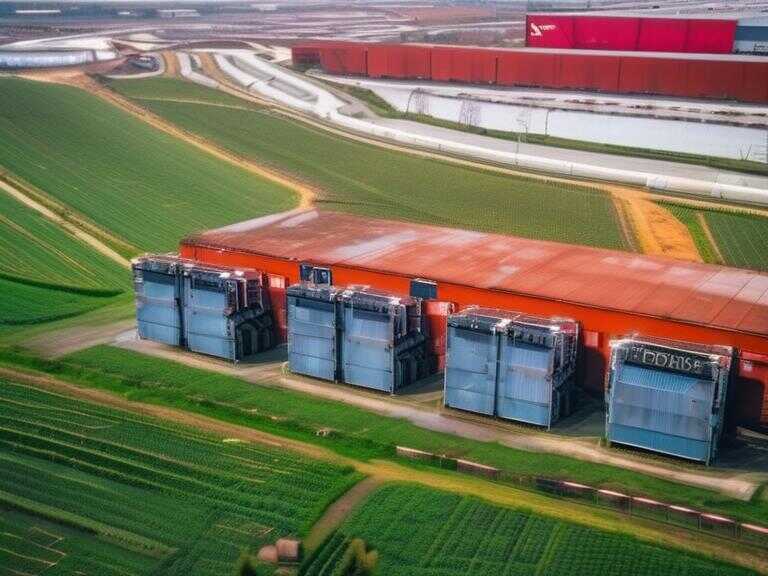
Goose Roundup at Lake Waukomis Sparks Controversy Among Residents and Wildlife Experts
The quietude at Lake Waukomis, near Kansas City, stems from a controversial roundup of 150 Canada geese due to health concerns and nuisance caused by their droppings. Despite some residents' outrage, the federal permit for the culling was legal. The geese, whose population had been managed through methods such as egg addling, were processed for meat donation. The issue raises questions about wildlife management and human-wildlife coexistence.

During the past summer, Lake Waukomis has experienced a significant transformation, with a particular focus on mitigating the issues caused by the overwhelming Canada geese population. Although the town, located just north of Kansas City, has historically been known for its picturesque waterside setting, the proliferating geese had become a substantial cause of concern for the approximately 1,000 residents.
Geese Roundup and Processing
With the aim of addressing the pressing challenges posed by the soaring geese population, the town's homeowners association initiated a large-scale "goose roundup" in June. This endeavor, which garnered substantial attention, resulted in the capture of approximately 150 Canada geese. The rationale behind this concerted effort was to confront the mounting issues associated with the geese, including environmental and health concerns. The homeowners association, in collaboration with relevant authorities, orchestrated the orderly capture of the geese, a task that proved to be both demanding and controversial.
Following the capture, the geese were methodically transported to a processing plant, marking a pivotal phase in the town's proactive approach to managing the situation. At the plant, the geese underwent necessary procedures, and their meat was subsequently donated to food banks, underscoring a conscientious utilization of available resources.
Regulatory Compliance and Community Response
It's noteworthy to emphasize that while Canada geese are federally protected, the orchestrated roundup was fully compliant with existing regulations. This critical compliance was underscored by the acquisition of a permit and the explicit endorsement of the initiative as an indispensable management strategy by the Missouri Department of Conservation. The partnership between the homeowners association and regulatory bodies exemplified a cohesive and rigorous adherence to due process, ensuring that the endeavor remained within the bounds of the law.
Despite the legal compliance and regulatory endorsements, the initiative triggered a significant degree of contention within the community. A cohort of residents voiced vehement opposition to the scale of the geese removal, expressing sentiments of dismay and disapproval. The emotive response from some quarters of the community served to underscore the deeply entrenched divisions concerning the management of the geese population, with contrasting perspectives on the appropriate course of action.
Nuisance and Health Implications
Anchoring the impetus for the geese management initiative were the pervasive challenges stemming from the burgeoning geese population. The adverse implications were acutely felt, with an emphasis on the substantial inconvenience and health risks posed to the community. Notably, the incessant proliferation of geese engendered a pervasive nuisance, characterized by extensive excrement that permeated various communal spaces. The resultant excrement, laden with E. coli bacteria, precipitated concerns regarding the attendant health hazards, thus amplifying the imperative for decisive intervention.
Residents recounted the pervasive impact of the geese excrement, detailing its encroachment on recreational spaces and its deleterious effect on the overall ambiance of the locale. The compounded environmental ramifications constituted a pressing catalyst for remedial action, as the community grappled with the tangible repercussions of the sustained geese presence. The imperative to safeguard public health and preserve the quality of the living environment galvanized the collective resolve to address the attendant challenges with urgency and efficacy.
Population Control Strategies
Embedded within the fabric of the community's response to the geese conundrum were multifaceted strategies designed to curtail the population growth and mitigate the entrenched challenges. The endeavor encompassed a comprehensive array of measures, ranging from egg-addling initiatives to the deployment of non-lethal deterrents. Notably, the meticulous coordination of the homeowners association's egg-addling effort exemplified a conscientious and targeted approach aimed at impeding the proliferation of the geese population.
Furthermore, the concerted deployment of non-lethal deterrents, including the strategic utilization of laser pointers and dogs, underscored the community's commitment to exploring an expansive repertoire of measures. Despite the assiduous application of these strategies, the unrelenting growth of the geese population underscored the formidable and intractable nature of the predicament, necessitating the contemplation of more assertive measures.
Future Prospects and Community Engagement
As the community navigates the ensuing discourse following the geese management initiative, the imperative to engender a collaborative dialogue and foster an inclusive decision-making process assumes paramount significance. The divergent perspectives and emotive resonance surrounding the geese predicament necessitate a concerted effort to engender a nuanced and empathetic understanding of the multifaceted considerations at play.
Looking ahead, the community is poised to deliberate on the potential evolution of its approach to geese population management, soliciting input from a spectrum of stakeholders to ascertain a durable and equitable resolution. The imperative to codify a sustainable framework that resonates with the collective aspirations of the community underpins the forthcoming deliberations, accentuating the pivotal role of community engagement and participatory governance.
The poignant and spirited deliberations surrounding the geese management initiative reflect the community's unwavering commitment to safeguarding the communal well-being and nurturing a harmonious living environment. As the community forges ahead, surmounting the challenges posed by the geese population, the abiding spirit of resilience and collective agency stands as a testament to the enduring vitality of Lake Waukomis.
Share news















